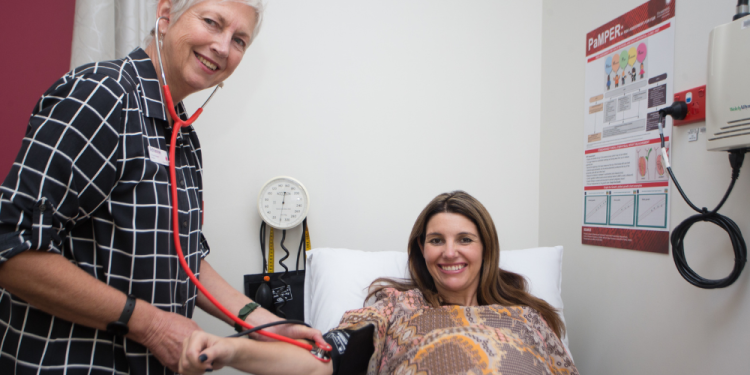
A national database at the Women’s is contributing to international consensus on the use of an important blood test to improve the care of mothers and babies at risk of preeclampsia.
The eight-year-old database has grown to be one of the world’s largest repositories of information about the clinical use of the Preeclampsia Ratio Test (or PERT test).
The PERT test measures the ratio of two biomarkers in the blood. It is used to predict preeclampsia, a serious disorder that affects five to eight per cent of all pregnancies, leads to dangerously high blood pressure, and can threaten the lives of mothers and babies.
Lead Researcher Professor Shaun Brennecke said the database includes information on more than 7,000 tests undertaken by more than 4,000 patients.
“The database is enabling an increasingly sophisticated understanding of the scope and benefits of the test in routine clinical practice,” Professor Brennecke said.
Although around 30 per cent of all pregnancies are evaluated for preeclampsia, diagnosis is difficult. This is especially true in patients who have underlying symptoms from other diseases.
Clinicians are able to use the PERT test, to better determine the need for patient admission or outpatient evaluation in cases of suspected preeclampsia.
“The Women’s was the first Australian maternity hospital to routinely use this important new test,” Professor Brennecke said. “We are leading the national rollout of the test and contributing to its international rollout.
“The test is dramatically improving the ability of maternity clinicians to optimise the care of women at risk of developing preeclampsia.”
Melbourne woman Katie James, a former patient of the Women’s, lost her baby daughter Ivy to preeclampsia. Professor Brennecke used the PERT test to monitor her subsequent pregnancies. She now has three healthy sons.
“Professor Brennecke prescribed a low-dose of aspirin to be taken every day and with the PERT test, I was able to have that assurance that any potential preeclampsia was being monitored and would be acted upon fast,” Katie said.
This research was published in Pregnancy Hypertension.